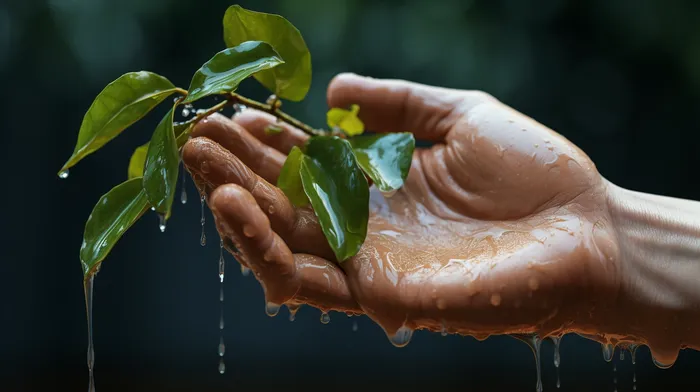Have you ever noticed how your fingers and toes wrinkle after spending a long time in the tub? While it might seem like a strange side effect of prolonged water exposure, it turns out that wrinkly fingers are not accidental at all – your autonomic nervous system is actually responsible for this transformation. Moreover, researchers have discovered that there may be a critical purpose behind this seemingly bizarre, involuntary skin change.
A Grip on Wrinkles
According to scientists, the primary reason why fingers and toes wrinkle is to enhance our ability to grip wet objects securely. This newfound gripping ability is believed to have evolved in response to the needs of our ancestors, who had to pick things up with their hands and feet in damp environments.
In a study conducted on the subject, it was found that people with wrinkled fingers were 12 percent faster at picking up wet objects than those without the water-induced skin folds. This natural occurrence in our bodies has proven advantageous when it comes to navigating slippery surfaces.
Delving Deeper into the Process
Understanding how and why our fingers and toes wrinkle requires delving deeper into the workings of the autonomic nervous system. This part of the nervous system governs vital functions that we don’t consciously control, such as heartbeat, digestion, and – you guessed it – wrinkling of the skin when wet.
The wrinkling process occurs due to the constriction of blood vessels in the fingers and toes, which is triggered by the autonomic nervous system when it detects prolonged water exposure. As these blood vessels constrict, they draw the skin inward and create wrinkles.
Wrinkles – An Evolutionary Advantage?
Some researchers argue that wrinkling of the fingers and toes may have played a significant role in the evolution of human beings. As our ancestors moved from the water to land, they needed to adapt to a wide array of slippery and uneven surfaces, such as various terrains, tree branches, and leaves. Wrinkled skin provided the extra grip that was required to traverse these challenging environments safely.
This hypothesis is supported by the fact that other mammals, like macaque monkeys, experience a similar wrinkling of their primate extremities when exposed to water. This fascinating discovery suggests that wrinkling as a feature might have evolved as a necessary adaptation for survival across many different species.
Additional Benefits of Wrinkling
While improved grip on wet surfaces is undoubtedly crucial, scientists have discovered additional potential benefits of wrinkling, such as increased tactile sensitivity and dexterity. These effects have been noted in individuals with macerated (wet) skin, who exhibited heightened sensitivity to touch and were better able to differentiate between various textures.
Moreover, the wrinkles formed in wet conditions may have a secondary advantage: they allow the skin to accommodate more water. By bunching up the skin, our fingers and toes can absorb and store water, which is useful for those living in water-scarce environments.
The Medical Side of Wrinkling
While wrinkling of the fingers and toes is a typical and harmless physiological response to water exposure, it could potentially be an indicator of more severe health issues, such as nervous system disorders or diabetes. It is important to pay attention to your body’s signals, but also keep in mind that not all wrinkling is a cause for concern – it can often just be a sign that you’ve had a good, long soak in the tub.
The Takeaway
As it turns out, pruney fingers and toes aren’t just an amusing side effect of spending too much time in the water – they are an integral part of our evolutionary history and serve a crucial purpose in enhancing our grip on wet surfaces. These wrinkles offer benefits beyond slip prevention, including improved tactile sensitivity and survival adaptations. So, next time you exit a long shower with wrinkled fingers and toes, you can appreciate not only their evolutionary importance but also the fascinating intricacies of the human body.



